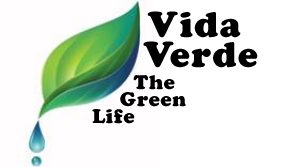 Aston-Patterning® is a comprehensive body therapy method. It blends movement education, structural bodywork, exercise design, and ergonomics. It is a method that helps one get the most from one’s body, at whatever level of capacity. It is effective for a range of structural problems arising from accident, injury or disease; as well as performance improvement for athletes, dancers and musicians.
Aston-Patterning® is a comprehensive body therapy method. It blends movement education, structural bodywork, exercise design, and ergonomics. It is a method that helps one get the most from one’s body, at whatever level of capacity. It is effective for a range of structural problems arising from accident, injury or disease; as well as performance improvement for athletes, dancers and musicians.
In nature, we see that each form is unique, each individual rock, each tree, has its own individual shape and means of deriving balance. Yet, our cultural conditioning leads us to a rather rigid “ideal” when we think of posture–that ideal is a linear, symmetrical, shoulders-back, chin-in, book-on-your head type of idea.
The view of Aston-Patterning (AP) is that the “ideal” is unique to each individual. In Aston work, good posture is not achieved by holding your body in a certain shape, it is achieved by learning to recognize what balance feels like. By “balance” here, I am referring not only to equilibrium, but also many other sensations, (such as relative and appropriate muscle tone, relationship with gravity, ground reaction force) which one can learn to recognize as part of one’s unique formula for optimal functioning.
Good posture is a matter of balancing, not holding. Referencing the sensation of balance helps one refine their body awareness. This process helps you know and understand yourself better—and to take better care of yourself.
Judith Aston, the originator of Aston-Patterning, has perceived that since human bodies are composed of approximately 80% water, an accurate view of body mechanics considers the natural dynamics of fluids. Natural movement of the human body is akin to the curves and spirals of water passing over rocks in a stream, or in the shape of the grasses blowing in the wind.
The methodology of Aston-Patterning takes it’s primary orientation from analysis of an individual’s normal functional movement patterns and muscle-tension patterns. The analysis occurs in two forms: visual, and tactile. The information gleaned allows the Patterner to understand the tension/movement pattern as a whole system, and to recognize within that system, the least-resistant pathway to change toward a configuration of increased ease and balance. Thus, AP is excellent not only for assisting recovery of acute and chronic structural-related issues, it is excellent for performance improvement for dancers, musicians and athletes.
Tools to assist the change process include: movement coaching (movement education), 3 forms of hands-on work, ergonomic intervention and a highly individualized system of exercise called Aston-Fitness. Movement is central to Aston-Patterning in that each session begins with observation of movement, which provides information to direct the session. Some everyday functional movement such as walking may be observed, or, whatever is relevant, eg. playing violin, bicycling, etc. Together, the Patterner and client decide the goals and priorities of the session. The work of the session may occur through any of the AP forms mentioned above, or a combination of them.
The aim of the movement education is to provide an experience of the new movement pattern, rather than a prescription ie. rules to follow. That is, to create an identifying beacon, like a lighthouse, that illumines a pathway of increased ease for the neuro-muscular system. The experience of identifying a movement pathway of increased ease often feels buoyant, light, or freeing. Once identified, it is sought after by one’s neuro-muscular system.
Within Aston-Patterning, another continuum is that of treatment-oriented methods on one end of the scale and self-maintenance tools on the other.”Myo” the hands-on form to address myofascial manipulation, or “Arthro” the hands-on form to address holding within bone tissue and soft tissue interfacing with bone are examples of Aston forms which are more treatment-oriented. Massage is the hands-on form for general relaxation which speeds healing on multiple levels. The Aston Massage is known as a favorite of all the stroking/ full-body massage forms. Highly trained hands make all the difference in massage. All three hands-on forms are used to assist the release of chronic holding patterns in the muscle, nerve and fascia which hold these soft tissues in binding, inefficient use patterns.
Aston-Fitness the Aston form which blends fitness work with self-administered therapy is on the self-maintenance end of the spectrum. Generally, an Aston-Patterning program will begin toward the treatment orientation and proceed toward the self-maintenance orientation.
Our movement patterns are an ever-present and accessible link between body and mind. Thus, movement is not only a means of accessing a wide realm of symptoms, but also can open gateways to body language, habit-patterns, or limiting beliefs that one may wish to change. The result of this work is often one of gaining considerable freedom in one’s body, and this can translate into the larger context of one’s life.
Aston-Patterning is a comprehensive body therapy method which looks to each individual for the answer for optimal intervention. The model that the “ideal” is unique to each individual; active participation on the part of the client both in exercise programing and movement education; and an accurate, system-oriented approach to hands-on work are the foundation of this work. Aston-Patterning can help you be in your best body.
Zia Parker, MA, CAP, CMT
Master’s degree in Movement Therapy; Wellness
Aston-Patterning faculty
Certified Massage Therapist
In over 25 years of practice, Zia has taught in Asia, Africa and the Americas in a wide range of healing arts, including movement education, bodywork, multicultural dance/theater and Permaculture eco-design.
Zia Parker MA CMT and Associates
skype: ziaparker ziaparker(at)yahoo(dat)com
VidaVerde.info/resume/
VidaVerde.info/bio/
VidaVerde.info/aston-fitness/
